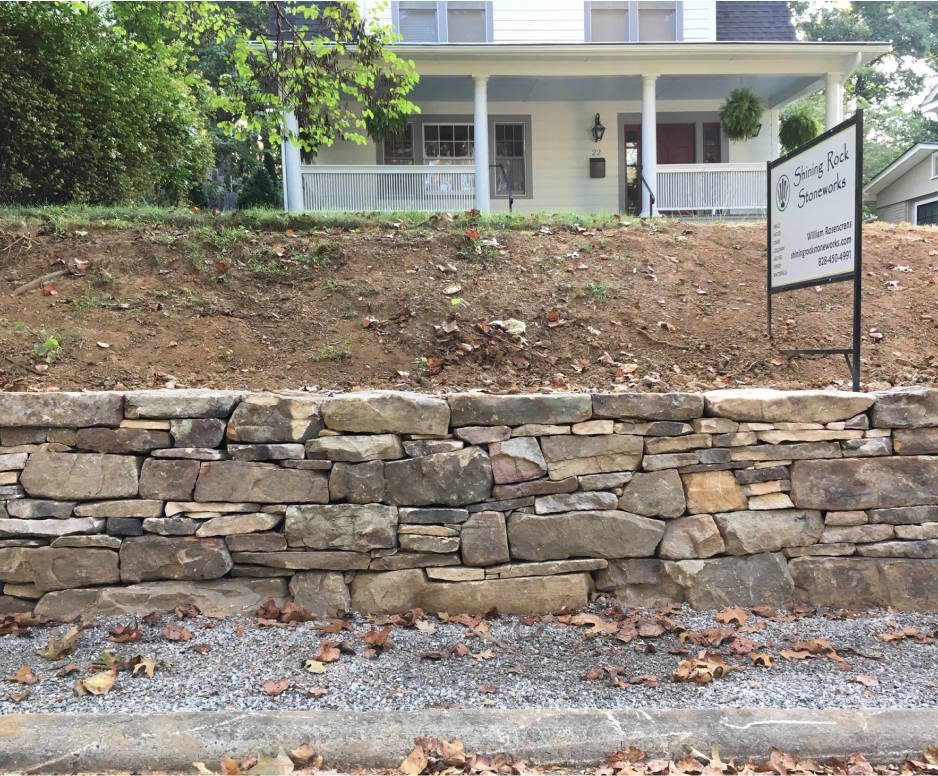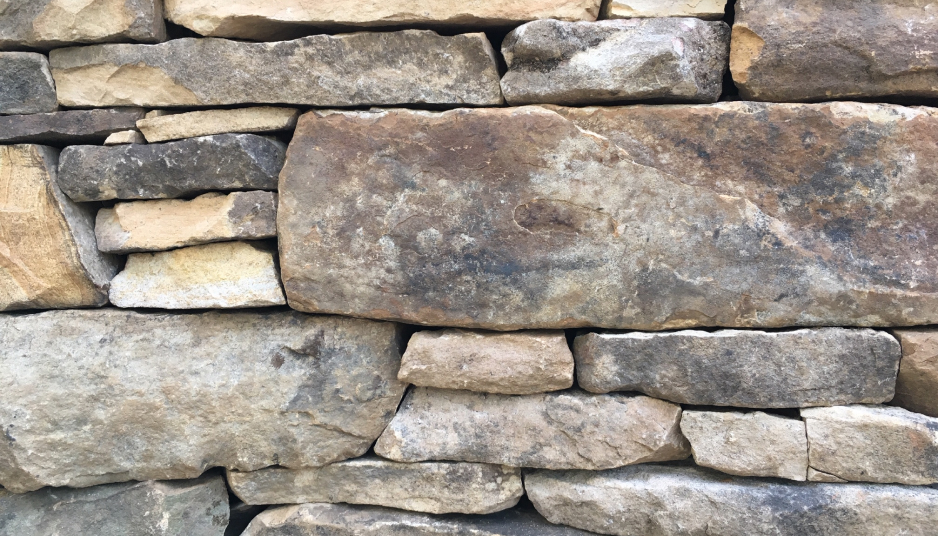Retaining Wall Construction and Repair
Retaining Wall Stonework in Asheville
At Shining Rock Stoneworks, we take pride in our retaining wall construction and repair services. Our retaining walls are built according to standards that have withstood the test of time for centuries.
Using locally sourced stone, we chisel each element until the faces meet smoothly, creating a sturdy and visually pleasing result. Every retaining wall we build blends with its surroundings.
To ensure superior drainage and flexibility against frost heave, our walls are supported from behind by heartstone. This strategic element enhances the longevity and resilience of the structure, allowing it to withstand the elements and endure for years to come.
A variety of horticultural elements are used to complement stone walls. In the shade, moss can cover the stone surfaces. Under full or partial sun, trailing plants, flowers, or ornamental shrubs can be encouraged to trail across the top.
We also repair walls. Even a decent wall can fail over time, and many are built without drainage in mind. Our retaining wall repairs can match a still-standing stretch of a beloved older wall or create a brand new look.

Retaining Wall Construction Using Dry Stacked Boulders
Thurland Avenue, Asheville
We embarked on the excavation for this retaining wall and patio project only to uncover an unexpected piece of local history: the remnants of the neighborhood’s ash pit, from an era when heating relied on wood and coal. Over the next day we dug down nearly seven feet until we reached solid ground. Utilizing large boulders, some weighing as much as a ton, we created several structures behind each course: heartstone, then gravel, and finally decent clay-rich fill dirt for maximal compaction to support a patio at the top.
Fieldstone Retaining Wall in Montford
Montford, Asheville
The foundation of every retaining wall we construct is grounded in a bed of clay-rich soil to provide stability and longevity to our structures. These walls are meticulously assembled from carefully shaped fieldstones. Behind the wall you see is a substructure of tightly laid heartstone: smaller stones which add reinforcement and aid in drainage. And behind this heartstone lies a layer of gravel, offering additional drainage support.
Our construction philosophy is rooted in respect for traditional craftsmanship, drawing inspiration from centuries-old walls that have withstood the test of time. Unlike some modern masons, we don’t rely on plastic landscape fabric behind our walls. Our walls are built using methods tested across countless generations of masons before us. They are designed to withstand the region’s strongest storms, its worst frost heave, and its rare seismic activity, and to be enjoyed by many generations to come.

Fieldstone Wall and Bridge
This culvert serves as the conduit for a creek in Woodfin, and concrete pours involving natural waterways require careful engineering to guarantee environmental safety, according to county and state codes. Our concrete forms are as sturdy as they come. With the pour completed, we attached Simpson ties across every stone course to ensure structural integrity and longevity.
Good stonework combines utility, strength, and aesthetics. When well constructed, these walls serve multiple purposes. This one simultaneously safeguards the bridge above it and the health of the waterway which runs through its core, along with that of the plants and animals living there.
Dry-stacked fieldstone Wall Detail, Montford
We were able to use smaller stones for this short wall, but even those stones with small faces extend back deeply to help anchor the retaining wall and prevent movement; vertical joints are “broken” by the stones in the next course for further longevity. All joints are tight, with maximum contact between sides, tops, and bottoms along the entirety of each stone.

